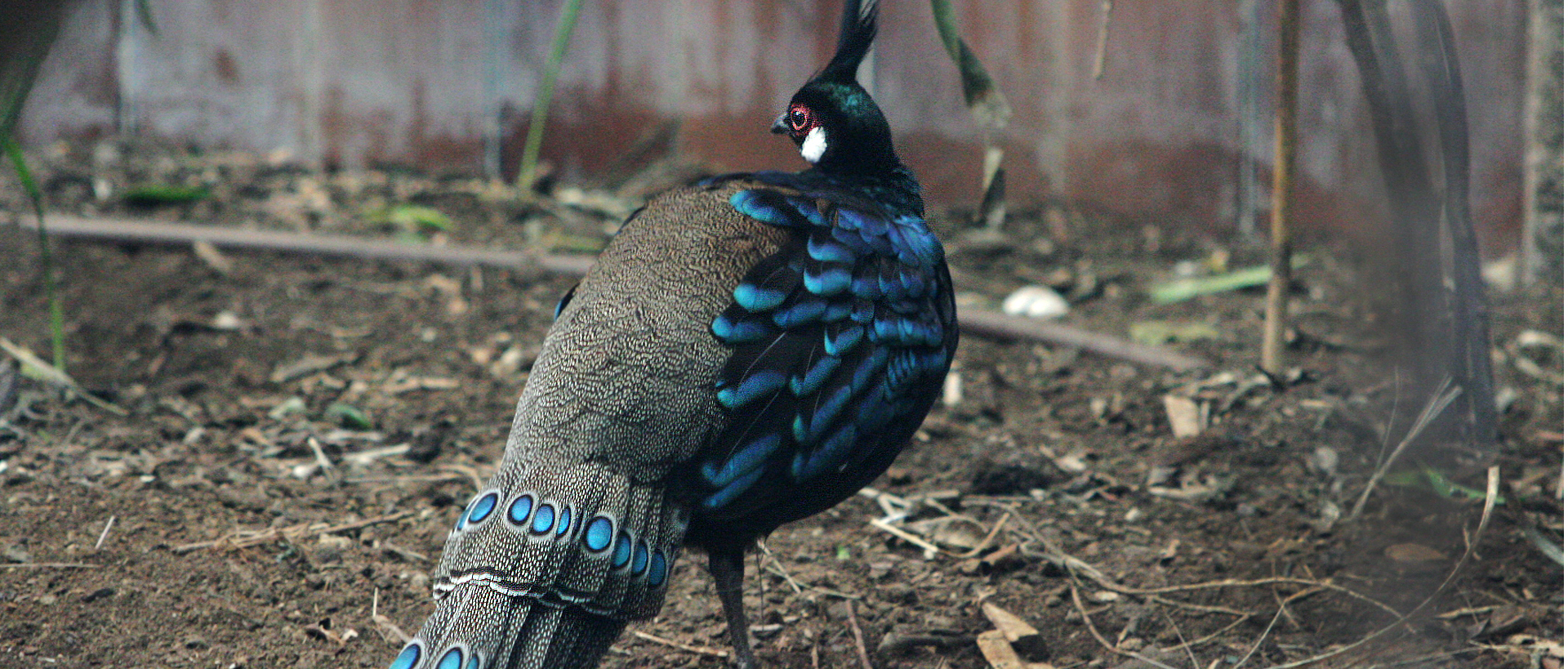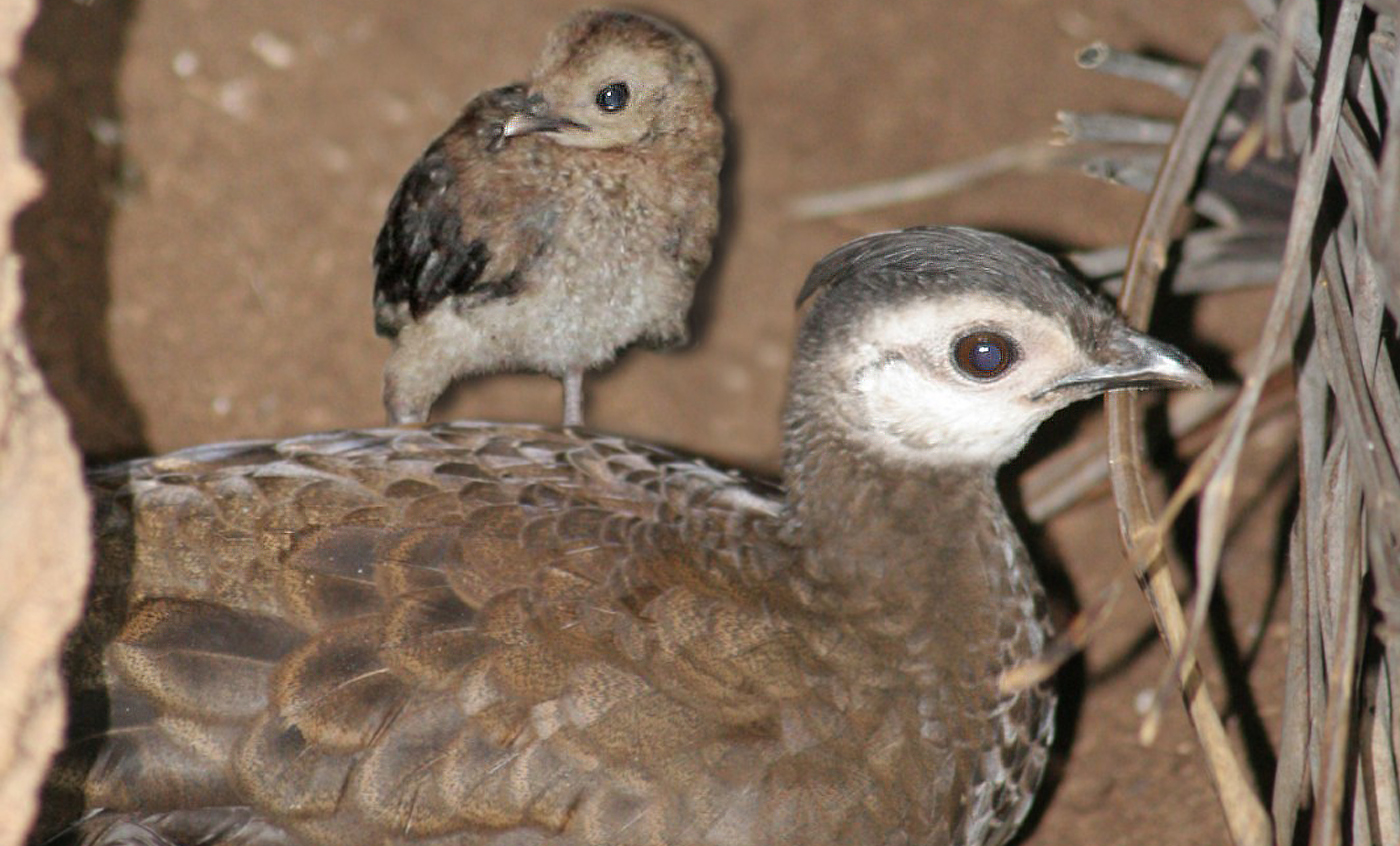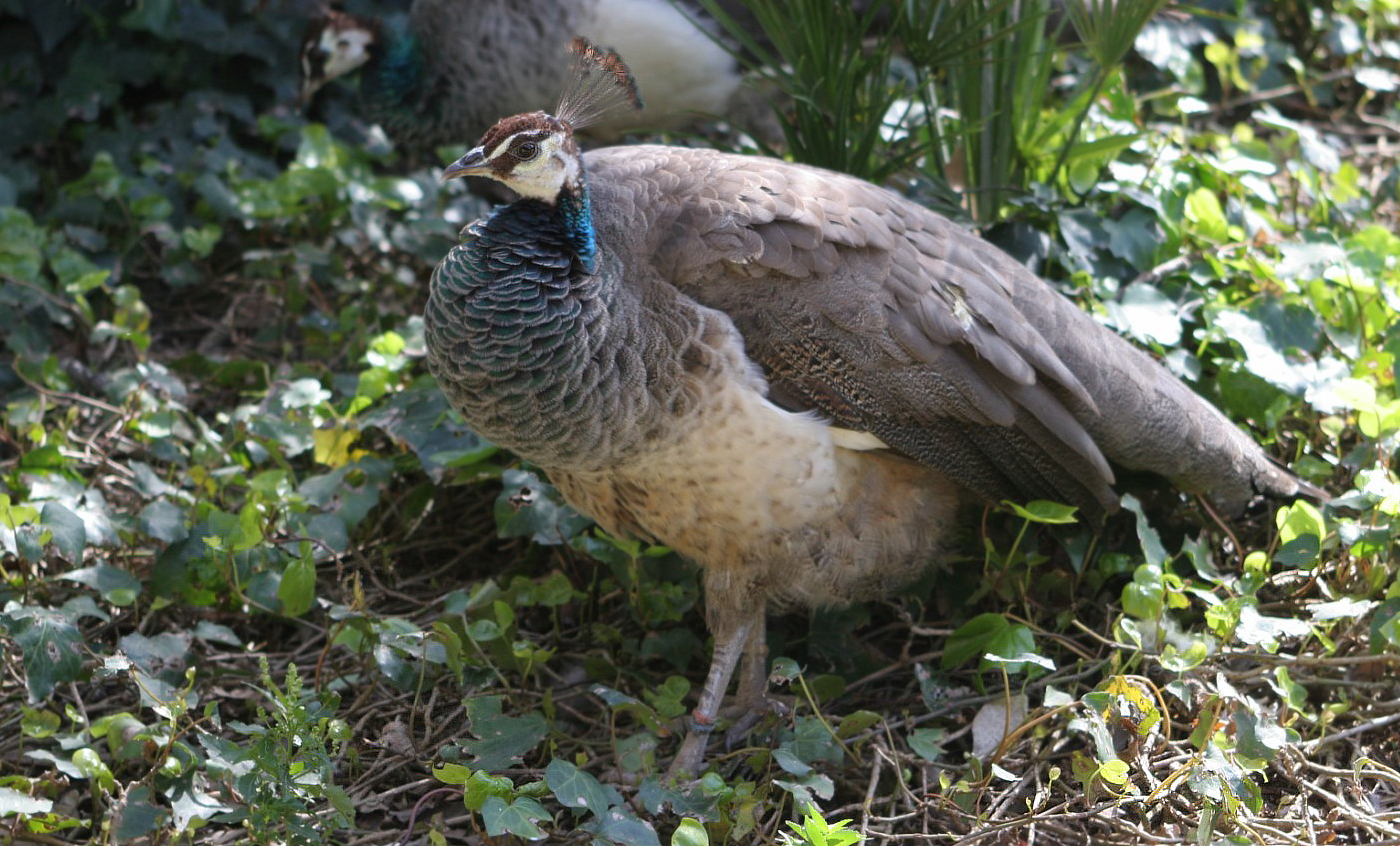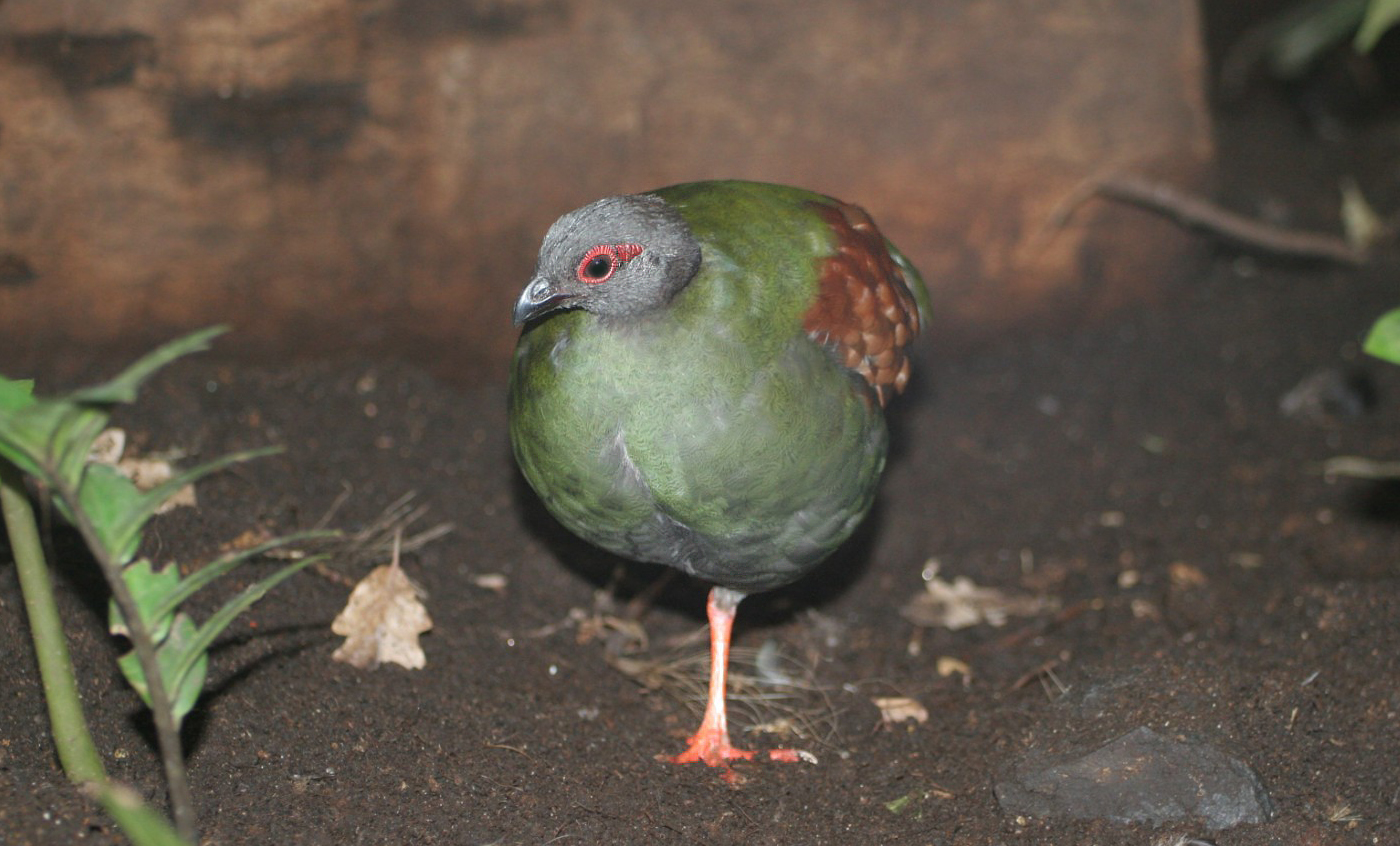Palawan peacock-pheasant
This small pheasant lives in the rainforests of the Palawan Islands, in the Philippines archipelago. Given its reduced area of distribution and over-exploitation by collectors, it is highly endangered.
As with all pheasants, the males and females look very different. During the mating display, the male fans out its tail to one side to impress the female with its colourful ocellus.
Breeding program
Natural habit
Palawan islands in the archipelago of the Philippines.
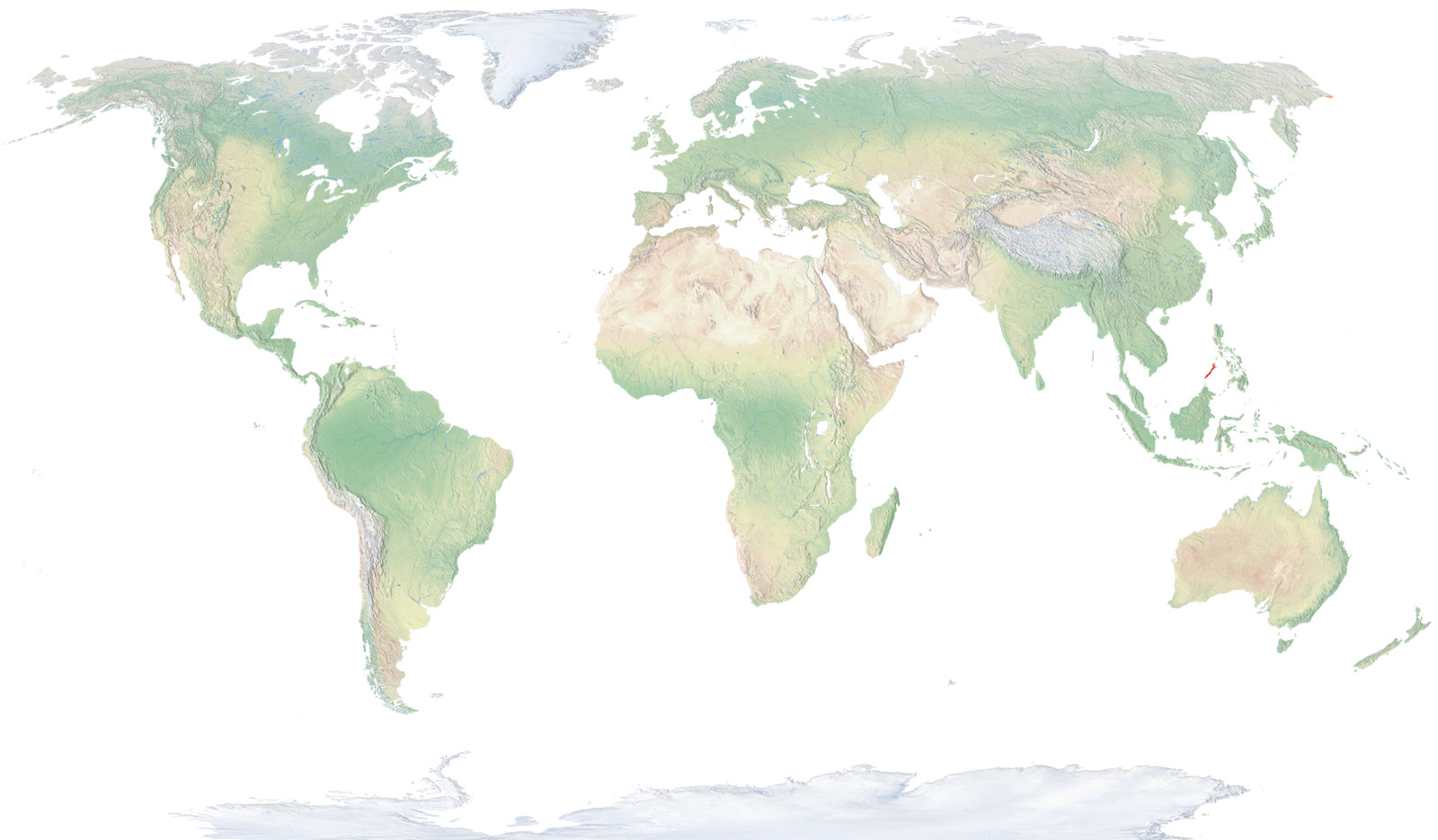
- Distribution / Resident
- Breeding
- Wintering
- Subspecies
Risk level
- Extint
- Extint in the wild
- Critically endangered
- In Danger
- Vulnerable
- Near threatened
- Minor concern
- Insufficient data
- Not evaluated
Taxonomy
Physical characteristics
Biology
Reproduction
Biology
There is clear sexual dimorphism, where males have gorgeous, iridescent black and blue plumage, with a face spotted with white, while the females have a more discrete brown colour. During the mating ritual, the male unfolds its eye-catching tail sideways.
This small pheasant lives only in the rainforest of the Palawan Islands in the archipelago of the Philippines.
They feed from the forest floor on seeds, fruits, berries, tender shoots and small invertebrates.
Despite the lack of data on how this species breeds in liberty, in captivity they tend to lay two eggs, which are incubated by the female for 18 to 20 days.
Resident and sedentary.
Given their small area of distribution and excessive capturing they have suffered at the hands of collectors, they are currently seriously endangered. Today their status is vulnerable.



